Exactly 190 years ago, September 18 (30 according to the new calendar), 1834 according to the old calendar, a royal decree was signed, which appointed Athens is the capital of Greece.
On September 18, 1834, following a decree issued by the Regency Council, acting on behalf of King Otto (who was still a minor at the time), Athens was declared the capital of the Greek state.
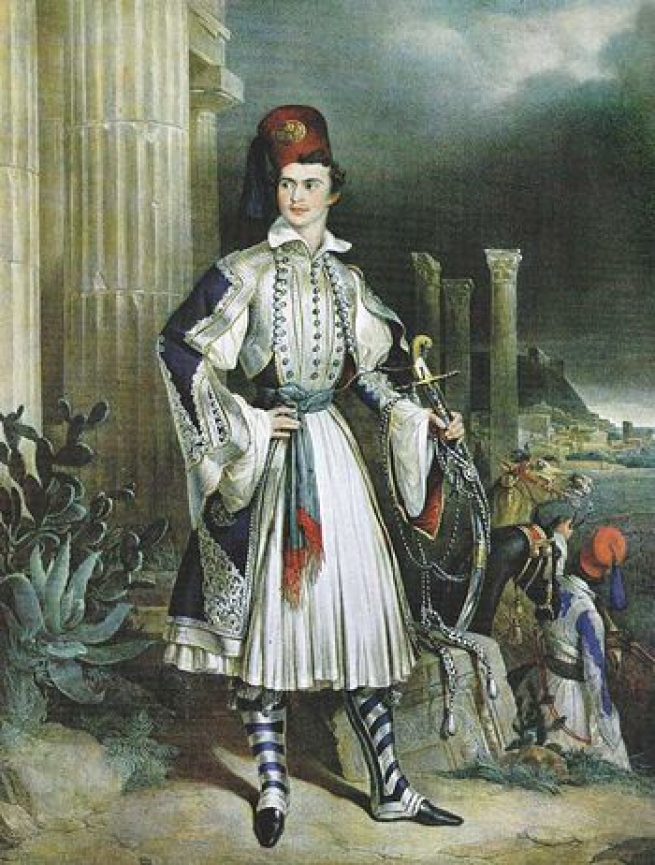
King Otto I of Greece in national costume. Lithograph by Gottlieb Bodmer
The reasons are probably related to the great history of Athens as the cradle of ancient Greek civilization. The decision was influenced by King Ludwig of Bavaria, who was known for his admiration of classical Greece.
The residents, whose number did not exceed 7,000 people, celebrated the historic event.
It is worth noting that at that time Athens was nothing more than “a big village”; at the same time, the population of Patras already amounted to 15,000, and in Thessaloniki, which is not in vain called the “Northern Capital” – 60,000 people.

Athens in 1810
“The day was cloudy, cold and gloomy. Just as gloomy was the procession that ascended from Piraeus to Athens with boxes and furniture in their hands, like a caravan of unpacked things to a new place, to a new fate, to a new settlement. The average modern apartment in an apartment building would comfortably accommodate the property of the administration of the new capital.”writes Michalis Fakinos, author* of the newspaper “O TAXYDROMOS” 15.12.1967.

“The city, which at that time received the title of capital, was a heap of ugly ruins. A few small houses at the foot of the Acropolis – one hundred and sixty-two shamotsele (i.e. hovels, poor houses built of cheap materials), most of them without roofs,” writes Spyros Melas in his essay. “Also the bazaar built by the Turks, the kopronas (an open-air place for defecating or storing manure and dirt), then the clock raised in the center – “a kind gesture” Lord Elgin to the Athenians in exchange for the Parthenon metopes he had removed.

Athens and the Acropolis Rock – circa 1840
Below, under the shadow of the rock, only the Madrasa (Muslim seminary) and a few Muslim mosques were visible. No traces of local individuality, only the axes of the barbarian passes on the city front. In this place of ruins and sadness, the administration of the Greek state came and settled.
Piraeus, where the authorities who had come from Nafplio landed, also hardly existed. The church of Agios Spyridon, the wooden customs shed and the warehouse of Gasparis, standing in front of the sea, were reminders of the port. The authorities took the road, better improvised, which ran through the swamps towards Athens. King Otto settled first in the house of Alexander Contostavlos, which stood in the garden of the parliament. Then in the “garden of Kleitmonos”, in the one-story house of Aftonides, waiting for the palace to be built.”

Military parade in front of the Royal Palace in Athens
It was then that the Austrian ambassador Prox Osten wrote to his government that “Athens is now nothing more than a heap of dirty ruins, scattered about magnificent relics, and interrupted by about one hundred and fifty buildings, constructed with great care. They are divided and scattered over a comparatively large area, and have for the most part been seized by the government by force for themselves and their necessary inheritance. The rents and provisions for living are as dear as perhaps the most expensive in the known world. The government has made two tariffs, and fixed the annual rent of a house at 15 per cent. of its excessive assessed value, but has no means of enforcing its stipulations.”

Athens 1836. Makrigianni Military Hospital. The first large building in the modern history of Athens
William Miller, on the other hand, gave the following vivid picture of the new capital: “The ruined walls of the houses (after the destruction of Kiutachi) cluttered the streets, and over the ruins, which were sometimes heaps of stones and sometimes small mounds of earth, paths were laid out along which travelers walked, leaving signs so that they could find their dwellings on their return. As he walked, he heard behind him the rumble of new falls. In some places the beams were still preserved, and in others two or three marble steps.”
The name of Athens, as the most suitable city for the capital of Greece, was first publicly mentioned in “To the General Newspaper of Augustus” October 15, 1832. “Athens should become the capital of Greece,” a German newspaper wrote, – not only because each province of the Peloponnese has its own centre, not only because Attica and all of Central Greece cannot be deprived of a capital, but also because, as is well known, Athens possesses the only thing that can compare with the climate of Smyrna, the most fertile soil, the best building material, ports and bays that are easy to use, trade in all directions and even the greatest memories.”
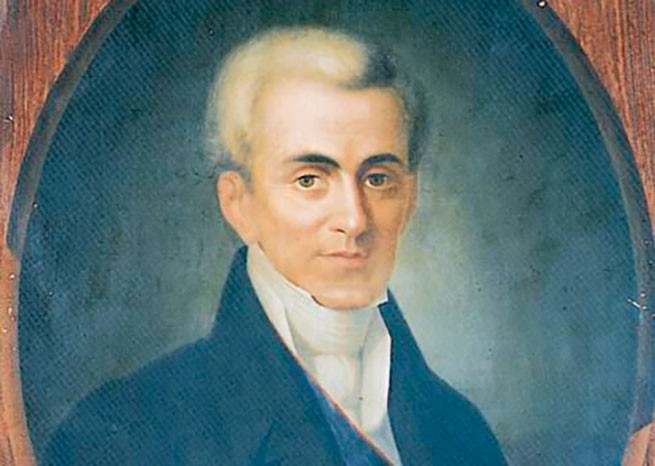
The first president of Greece, Ioannis Kapodistrias
“But before this question was raised by a German newspaper, in 1830 the architects Stamatios Kleanthis and Saubert visited Ioannis Kapodistrias on Aegina and proposed Athens as its capital. The two architects essentially agreed to draw up a plan for the city, studying the area at length. Kapodistrias, who discussed the idea with them, seemed to be interested, but was in fact indifferent. So, to avoid a negative response, he referred them to his wise fellow citizen Andreas Moustoxidis, who refused. Thus the idea of transfer was abandoned. At least temporarily. Transfer was discussed more frequently when Otto arrived in Nafplio. This city was doomed, “like a threshing machine, polluted, deprived of fresh water and squeezed between a swamp, a harbor and rocks.”
But why should Athens be preferred? This question was asked by Corinth, Argos and Tripoli, each of which wanted to have the honor of being called “capital” in its own name. In the end, their proposals remained unanswered, because Athens had the glory of its historical past. That is why they won. On September 18, 1834, the regency designated Athens as the capital by royal decree.
It is impossible to describe the scandal that arose when it became known that Athens had been designated the capital of the Greek state. Foreigners began to arrive from everywhere, buying land and building houses. Just as it happens today when it becomes known that a highway will be built in this or that area. Foreigners and rich Greeks from Russia, Moldova, Wallachia and Western Europe came to Athens with all their property and built houses on the ruins left after the war.
Along with the foreigners came new ideas and new things. For example, the famous two-wheeled cargo carts. The English admiral Pulker Malcolm brought such carts from Malta to facilitate the construction of his country villa in Patisia. This was the first time, as historians claim, that a wheel rolled on Athenian soil, if, of course, you don’t count the chariots of antiquity. And the Athenians of 1834 were proud of this progress. After all, until then they had used camels as a means of transportation..
Sadness receded. So did ugliness. As for beautiful women, where could they be found in the 160 houses of Athens? The decline of beauty began with the return of Athenian families from their places of exile. Then began the distribution of inhabitants into circles. The circle of the aristocracy of blood, the circle of the aristocracy of the spirit, the circle of the aristocracy of arms.

Doukissa Plakendias – Duchess of Piacenza
In those days a star shone duchesses (dukes) PlakendiasA Frenchwoman named Marie Anne Sophie de Marbois Lebrun, a lady-in-waiting to Josephine and Marie Louise, came to Athens and built her beautiful mansion on the site of the present Byzantine Museum. Accompanied by people of her circle, she experienced much pain and disappointment.
Sophia de Marbois. Born in 1785 in Philadelphia, America, the daughter of the French Consul General François de Marbois and the American Elizabeth Moore, daughter of the Governor of Pennsylvania, Sophia de Marbois married in 1802 the brilliant officer of Napoleon Anne-Charles Lebrun, whom world history remembers immeasurably more and more often than his wife, warmed by Greece: in 1805 Napoleon did his faithful Lebrun a great honor, allowing him to be the first to deliver to Paris the news of the victory of the French army in the Battle of Austerlitz, and in 1812, having earned the title of Baron of the Empire, Lebrun accompanied Napoleon in the Russian company. The name of Anne-Charles Lebrun is embossed on the Arc de Triomphe in Paris.
As we learn from the old text of N. Yokarinis, written in “Athens News”the best houses of that time were those of Karatzas and the captive Vlachouzis on Pireos Street, where the conservatory was located. In the house of the socialite, the “feasts of Trikouvertas” were held. Something like a “sorpraz party”, where the cream of Athenian society enjoyed the prologue of the soumada, listened to the guitar and danced syrtos (not sirtaki) and European dances, polkas and mazurkas. The latter was the daughter of Georganta, wrote the demonic secular writers of that time. The guests even tried “Spanish bread”, known as biscuit. From the house of Vlachouzis came the “debutantes” of that time, the daughters of noble Athenians, who had just left the desks of the Parthenagogic school founded by the American missionary Hill.
King Otto and Queen Amalia
But Queen Amalia's palace was not without a secular spirit. First came the grand pianos, then the German aristocrats. And the Greek ladies-in-waiting began to study French and German, European dances and dress like Parisians, changing their attire daily.
Three foreign cosmographers took up the carefree Athens of that time. Grenier wrote that there were no beautiful women in Athens, while they were abundant in the provinces. The lady of honor, the German Baroness Julia Nordenpflikht, described the worldly spectacles in detail. About toilets and “to the Polish girl” which “maniacally” danced in the palace of the courtiers and ministers. Another anonymous secular writer had dealings with beauties. He praises Fotini Mavromichali, who was considered the most famous beauty in Europe.

Palace of the Duchess of Plakendias. Now the Byzantine Museum.
She learned French from the Duchess of Plaquendi. This is how she describes her: “Modest stature, swan neck, imperial splendor, small and shiny teeth, lips full of grace, mouth of indescribable grace, forehead straight, nose of an antique statue. Hair neither light, nor black, nor chestnut. Eyes blue, skin wheaten. The most perfect creature I have ever seen in my life.”
The social circles of that time owed much to donkeys. They were used to transport well-dressed women from home to ballrooms. Of course, it was the dust that made the silk and satin dresses of the ladies unrecognizable. How they caught large green flies is not described. But we know that this type of green-golden flies abounded in the new capital. Then strollers and mosquito nets appeared, children grew up, got used to the new life. DDT appeared much later…

Athens in 1863. Syntagma (Constitution) Square and the Russian Church. On the right is the Zodoriti confectionery.

Athens in 1900, View of Lycabettus Hill. On the right is the Royal Palace and Syntagma Square
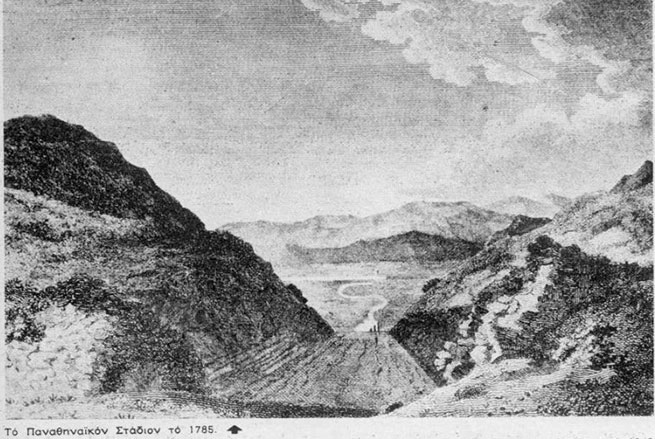
On this site, in 1896, the famous Panathenaic Stadium was built, which would host the first modern Olympic Games.

Panathinaikos stadium, photo from 1948
*The publication uses the text of journalist and writer Michalis Fakinos, published in the newspaper “Tahidromos” on December 15, 1967. Fakinos worked for a long time in the newspaper “Ta Nea” and wrote novels, short stories, plays and chronicles.
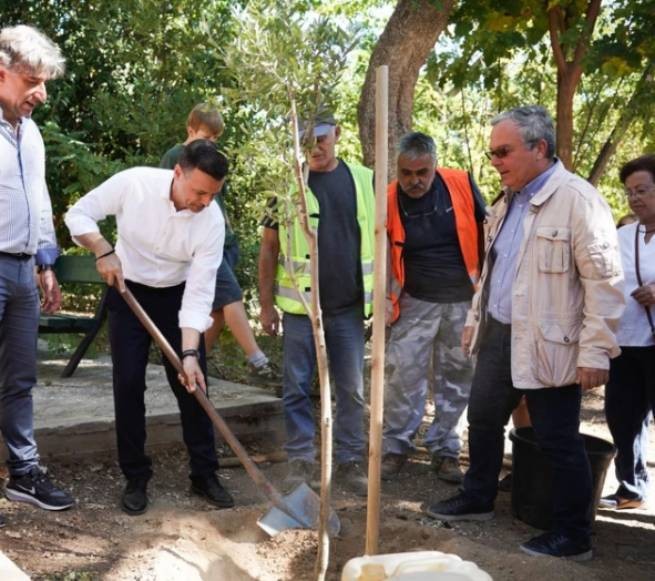




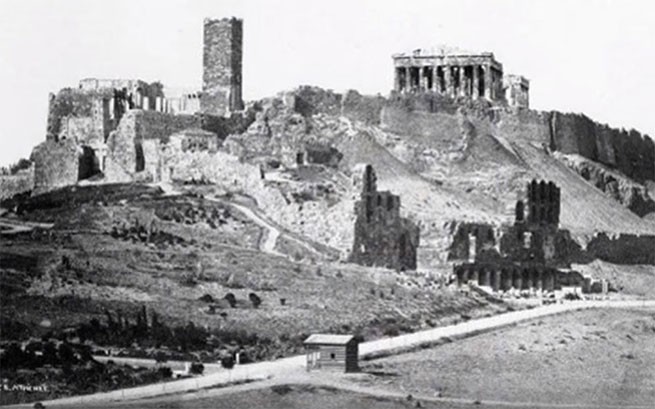

More Stories
The Zachariadi Family History
Who is he – the only Greek god Pan who got into the chronicles of Plutarch, and what does Jesus Christ have to do with it?
How a cuckolded husband in Ancient Greece paid for his wife’s betrayal and what does the donkey have to do with it?